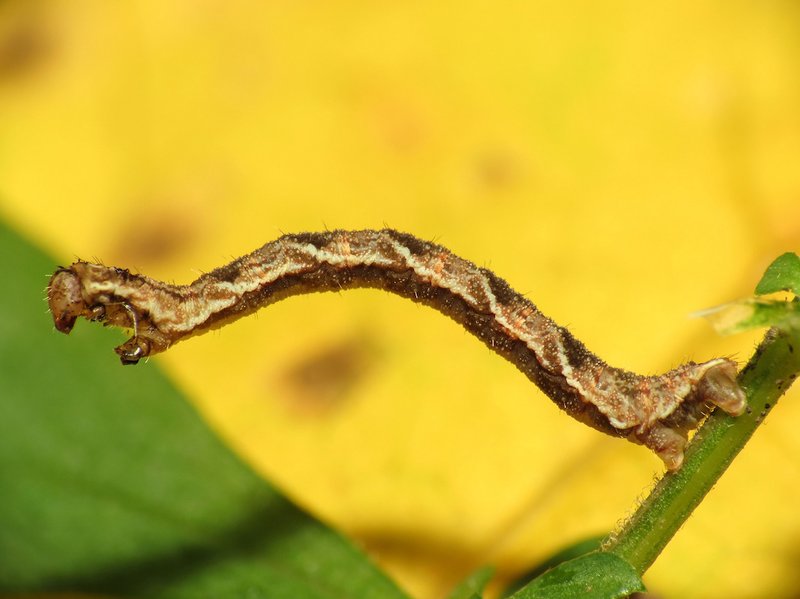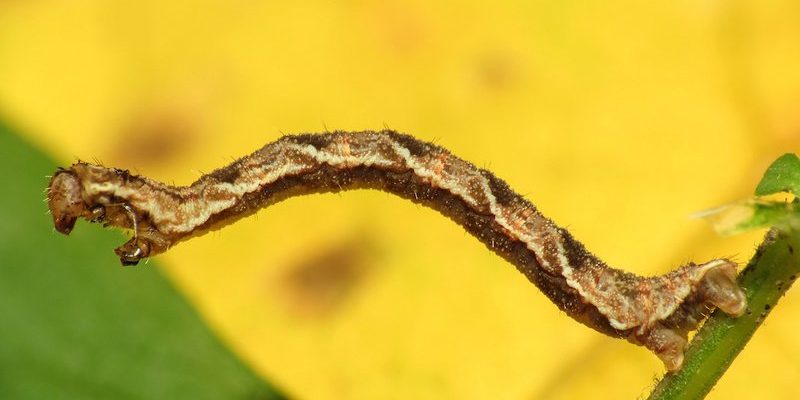
You might be surprised to learn that the role of inchworms in farming can vary dramatically depending on the situation. While some argue they’re just minor nuisances, others see them as potential allies in maintaining a healthy ecosystem. Let’s unpack this a bit and see where inchworms fit into the agricultural puzzle.
What Are Inchworms?
Inchworms are the larvae of moths, primarily from the family Geometridae. They get their name from the way they move, which resembles a measuring tape being pulled and released. These little critters can be green, brown, or even colorful, and they often blend well with their surroundings, making them tough to spot.
You might be wondering, why do they matter in agriculture? Well, inchworms can have varying effects on crops, ranging from being harmless to causing significant damage. Their life cycle usually involves feeding on leaves during the caterpillar stage before developing into moths, where they can lay eggs and continue the cycle.
Understanding their behavior and how they interact with plants is key in determining whether they’re helpful or harmful.
How Inchworms Affect Crops
Inchworms can have a pretty big impact on crops, depending on their population size and what they’re munching on. In small numbers, they may not even be noticeable, but when they swarm, they can wreak havoc. They primarily feed on leaves, which can lead to reduced yield and poor plant health.
Here’s what happens: as inchworms feed on the vegetation, they can strip leaves down to the veins, leaving your plants looking skeletal. This damage can stress plants, making them vulnerable to diseases and other pests.
However, it’s not all doom and gloom. Inchworms can also naturally control some plant pests by attracting beneficial predators, like birds or other insects. Their presence can, in some cases, create a balance in the environment, helping other plants thrive without overwhelming them.
Identifying Infestations
To figure out if inchworms are affecting your crops, keep an eye out for certain signs. Look for:
- Defoliation: Missing leaves or leaves with holes are red flags.
- Caterpillars: Spotting the inchworms themselves is a clear indicator.
- Excrement: Small droppings on leaves can signal their presence.
If you suspect you have an infestation, it’s important to act quickly to limit damage.
Are Inchworms Beneficial? The Argument for Friends
Now, let’s take a moment to appreciate the positive side of inchworms. Believe it or not, they can be beneficial in several ways. For one, they serve as a food source for birds, which can help keep pest populations down. Birds love to snack on these squirmy worms, and that’s a natural form of pest control right in your backyard.
Moreover, inchworms can contribute to soil health. As they feed and eventually die, they decompose and return nutrients to the soil. This process can enhance the overall fertility of your land, making it more robust for other plants to grow.
In the grand scheme of things, inchworms are a part of the ecosystem, helping to maintain balance—even if they can be pesky at times. You might find that fostering this balance is more beneficial than trying to eradicate them completely.
Challenges in Managing Inchworms
Managing inchworms can be tricky. On one hand, you want to protect your crops; on the other, you don’t want to disturb the beneficial insects in your garden. It’s a delicate dance. Applying pesticides is not always the best solution, as it can harm the very predators that help control pest populations.
So, what can you do instead? Here are a few ideas:
- Handpicking: If you have a small garden, pick them off by hand. It’s tedious, but effective!
- Natural Predators: Introduce or encourage birds and beneficial insects like ladybugs to keep inchworm numbers in check.
- Companion Planting: Plant herbs or flowers that deter inchworms or attract their predators.
Finding a balance between managing the pest and allowing nature to take its course can be really rewarding.
When to Worry: Signs of Serious Infestation
If you’re seeing lots of defoliated plants and not just a few leaves here and there, it might be time to take action. Serious infestations can lead to significant crop loss if not addressed quickly.
You may also notice a sudden increase in inchworm activity during certain seasons, especially in early spring when moths lay eggs. During these times, scouting your plants regularly can help catch a problem before it spirals out of control.
If the situation becomes overwhelming, consulting a local agricultural extension service can provide targeted advice on dealing with more severe infestations. They can also assist in identifying whether specific species of inchworms are causing the damage.
The Importance of Monitoring
Keeping an eye on your crops and inchworm populations can prevent future problems. Regularly checking for signs of inchworms helps you stay ahead of potential issues. By monitoring, you can distinguish between a few harmless inchworms and a serious infestation, allowing for timely intervention.
Consider setting up a weekly routine to inspect your plants. This proactive approach can also help you build a stronger relationship with your garden or farm ecosystem.
Inchworms can be both beneficial and harmful in agriculture, depending on the context and their population size. By understanding their role in the ecosystem, you can better manage them in your garden or farm. It’s all about finding that sweet spot—encouraging their beneficial aspects while managing their potential downsides.
In the end, inchworms serve as a reminder of nature’s complex relationships. With thoughtful observation and management, you can ensure that these little green critters work for you—not against you! So, the next time you encounter an inchworm, take a moment to appreciate the part they play in the bigger picture of agriculture.

